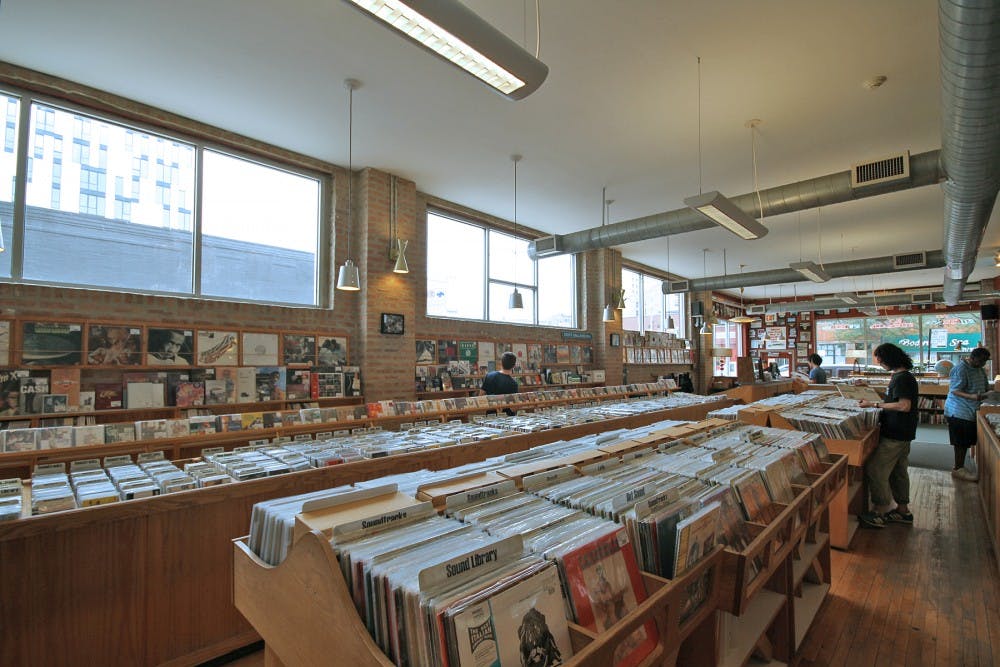The term concept album is a little hard to define. On one end of the spectrum, you have albums like Bring Me the Horizon’s That’s the Spirit, which NME called “a loose concept album”—all or most of the songs revolve around a central idea. On the other end, you have Green Day’s American Idiot and every My Chemical Romance album, with complex and intricate plots and storylines. The label of concept album gets thrown around to describe albums where all the songs vaguely deal with the same broad idea. That's true of a lot of albums, but a concept album refers to an album with a cohesive idea and a clear narrative arc.
A lot of albums released in the past year—Creeper’s Eternity in Your Arms, All Time Low’s Last Young Renegade, and Halsey’s Hopeless Fountain Kingdom—fall into this middle ground. The songs are distinct and diverse, and the subject matters of the songs are often more personal than part of a fictional universe or plot. But they have characters, narratives, and themes that join all the songs together. Sequence matters. World–building comes into play. The music videos are carefully planned, make references, and are often linked.
The contemporary music–consuming population consists of streamers and purchasers of physical copies, with a lot of people falling into both categories. According to a Nielsen report, streaming is now the most popular method of consuming music. Spotify has become so integral to the way we consume music that streams on the platform are incorporated into an album’s Billboard chart position. But Spotify has made virtually any song a single. Like iTunes, you can pick and choose what you want from an album. There is little reason for artists to even identify singles.
The idea of a concept album loans itself more to the fans who will purchase and consume the album as a whole entity. It’s especially suited for the physical copy, where you can’t shuffle or rearrange the songs. This works for a concept album, where the songs are structured and sequenced to produce a narrative. This works less well for the digital age and shuffle buttons. Streaming is better suited to singles.
Then why is the concept album surviving, even thriving in 2017?
Part of it is that we have a very active and avid music–listening population. Fan culture is growing stronger and one of the ways fans show loyalty is by buying albums—often physical copies, pre–orders and multiple copies in different formats.
Last year, physical sales accounted for a larger proportion of album sales than they were the year before. Interestingly, internet and venue stores overtook merchant retailers to become the largest distributor of physical copies, suggesting that it is both because of the internet and fan loyalty that people still buy physical copies. This also indicates that the people buying physical albums are dedicated fans as opposed to casual listeners who stumbled upon a CD at Best Buy. Nielsen reports that rock music experiences more album sales (both physical and digital versions) while fans of hip–hop and R&B tend to favor streaming services.
Vinyl sales are on the rise while digital sales are actually declining at a faster rate than physical sales because of streaming services. So it’s people who were downloading on iTunes that are now using Spotify and Apple Music while the fans who were buying physical CDs are still loyally buying CDs.
Fan culture is also mediated through social media—something that’s important to everyone, and how we experience music in general. World–building is important to the 2017 concept album, something that has been facilitated through music videos. The popularity of music videos and YouTube allows artists to incorporate visuals into audio content. This helps them to establish the aesthetics of their work. That means that even a casual listener can get the whole story from just one video. So even if the only song you hear off of Hopeless Fountain Kingdom is “Now or Never,” you get a good sense of the concept—a dystopian adaption of Baz Luhrmann’s 1996 film adaptation, Romeo + Juliet.
There’s a third reason, and it’s the tradition of the album. As both music creators and consumers, the concept of the album itself is so ingrained in us that it’s hard to think of music outside of the constraints of a larger body of work. It’s surprising that artists are still even bothering to group songs into albums, but it’s because the album as an idea is not going anywhere.
Sometimes the actual song itself is self–contained in some way, and the concept is reflected through the combination of songs—so the song stands alone, but the story functions through the grouping. You don’t miss out on anything if you just hear the one song, but you also don’t get the full story of the album. The lyrics of “Bad at Love” don’t tell you anything about the concept of Hopeless Fountain Kingdom, but do tell a very compelling story about Halsey. But the video is a direct installment in the narrative, as well.
This year’s concept albums have adapted to streaming, making work that is digestible as a whole but also in bits and pieces. Artists know that you might not listen to their album start to finish in one sitting, but they’ve made music that doesn’t suffer for it. And in return, both hardcore fans and casual listeners have rewarded them for it.

